You are using an out of date browser. It may not display this or other websites correctly.
You should upgrade or use an alternative browser.
You should upgrade or use an alternative browser.
A portable engine
- Thread starter firebird
- Start date

Help Support Home Model Engine Machinist Forum:
This site may earn a commission from merchant affiliate
links, including eBay, Amazon, and others.
That pressed really well Rich, considering the wall thickness to diameter ratio.
Very impressive.
Chuck,
It is a grease that is normally used on hot parts on automobiles, such as engine exhaust fixings, so that the parts don't corrode up too much and you can get them apart when needed, and certain areas of brakes, between the piston and disc brake pads to stop brake squeal. It is a basic anti seize grease, that has a lot of copper (or some other like material) in it.
John
Very impressive.
Chuck,
It is a grease that is normally used on hot parts on automobiles, such as engine exhaust fixings, so that the parts don't corrode up too much and you can get them apart when needed, and certain areas of brakes, between the piston and disc brake pads to stop brake squeal. It is a basic anti seize grease, that has a lot of copper (or some other like material) in it.
John
Admiral_dk
Well-Known Member
- Joined
- Jul 15, 2010
- Messages
- 166
- Reaction score
- 0
What's this copper grease stuff? Seems to be magic
If I'm not mistaken, it's the only stuff you can use with car, motorcycle etc. brakes (heat resistant), so you can get it at autoshops.
And just as a warning in case somebody didn't understand the lubricating of brakes - NEVER use the grease on the brake pads, only on the rest of the moving parts in the brake system.
Hi
Chuck, the crankshaft idea needs refining. Its almost there but not quite right. I'm not sure at the moment whether or not I'll pursue it any further. The copper grease is well known throughout the motor trade here in the UK and is a good general purpose grease for the home workshop I have found.
John, yes I was surprised how well it pressed. I think with a steel die and punch and a heavier press it would be possible to form it in one go. My home made press is only 6 ton which is why I stopped half way to re anneal. The wood punch and die has deformed slightly so will not be capable of being used again. All in all an interesting excercise though.
And like Admiral says not to be used on the actual brake linings.
Cheers
Rich
Chuck, the crankshaft idea needs refining. Its almost there but not quite right. I'm not sure at the moment whether or not I'll pursue it any further. The copper grease is well known throughout the motor trade here in the UK and is a good general purpose grease for the home workshop I have found.
John, yes I was surprised how well it pressed. I think with a steel die and punch and a heavier press it would be possible to form it in one go. My home made press is only 6 ton which is why I stopped half way to re anneal. The wood punch and die has deformed slightly so will not be capable of being used again. All in all an interesting excercise though.
And like Admiral says not to be used on the actual brake linings.
Cheers
Rich
Hi
I only had to give the tube plate a light skim to achieve a nice fit.

The inside had a small amount turned out as well to bring it back to the required size of 2 inch.

I'm going to fit 9 fire tubes. Its a bit of a squeeze to get them all in hence the reason for turning the inside diameter to size. The following sketch shows how tight things are.

I turned a wood spiggot to hold the fire box tube, I'll need to turn the ends square.


Also a wooden holder for the tube plate, a good tight fit. To be used when I drill the fire tube holes.


Cheers
Rich
I only had to give the tube plate a light skim to achieve a nice fit.

The inside had a small amount turned out as well to bring it back to the required size of 2 inch.

I'm going to fit 9 fire tubes. Its a bit of a squeeze to get them all in hence the reason for turning the inside diameter to size. The following sketch shows how tight things are.

I turned a wood spiggot to hold the fire box tube, I'll need to turn the ends square.


Also a wooden holder for the tube plate, a good tight fit. To be used when I drill the fire tube holes.


Cheers
Rich
Hi
Don't ask me how I worked this out, it took me a few hours. There are times when I am mathematically challenged ??? ??? ??? Perhaps Marv will jump in here and explain the finer points
Anyway I worked out that 9 circles .5 inch diameter sit inside a 2.0 inch circle.

Which in turn means each small circle is 40° from its neighbour.

With a rotary table set up and centred in the mill its easy enough to move the Y axis .75 inch to find the cntre of hole No. 1. I then went left and right 40° and 80° to holes 2 and 3 and 7 and 8. Holes 5 and 9 are directly below hole 1. That just left holes 4 and 6 to locate using the X and Y table movement.
I fitted a sacrificial table to the rotary table.
A practice piece of aluminium was marked out. I can use this as a jig to help hold the tubes when it comes to silver soldering them into the tube plate.

The plate then screwed onto the table. Following my drawing I centre drilled all the hole locations.


Then followed through with a 3/8 drill.

A 3/8 reamer by hand to clean up the holes.

The 3/8 tube fits well

The plate laid on top of the drawing, all lines up

The firebox standing on the drilled plate.

Finally today I centred and glued the wood block to the table that will hold the copper tube plate while I drill it.


heers
Rich
Don't ask me how I worked this out, it took me a few hours. There are times when I am mathematically challenged ??? ??? ??? Perhaps Marv will jump in here and explain the finer points
Anyway I worked out that 9 circles .5 inch diameter sit inside a 2.0 inch circle.

Which in turn means each small circle is 40° from its neighbour.

With a rotary table set up and centred in the mill its easy enough to move the Y axis .75 inch to find the cntre of hole No. 1. I then went left and right 40° and 80° to holes 2 and 3 and 7 and 8. Holes 5 and 9 are directly below hole 1. That just left holes 4 and 6 to locate using the X and Y table movement.
I fitted a sacrificial table to the rotary table.
A practice piece of aluminium was marked out. I can use this as a jig to help hold the tubes when it comes to silver soldering them into the tube plate.

The plate then screwed onto the table. Following my drawing I centre drilled all the hole locations.


Then followed through with a 3/8 drill.

A 3/8 reamer by hand to clean up the holes.

The 3/8 tube fits well

The plate laid on top of the drawing, all lines up

The firebox standing on the drilled plate.

Finally today I centred and glued the wood block to the table that will hold the copper tube plate while I drill it.


heers
Rich
mklotz
Well-Known Member
Don't ask me how I worked this out, it took me a few hours. There are times when I am mathematically challenged Perhaps Marv will jump in here and explain the finer points
When people are faced with problems that involve arranging small circles around a large circle they often want to divide the circumference of the large circle by the diameter of the smaller circles to determine the spacing. That is dead wrong. Take a few minutes with pencil and paper to convince yourself that it won't work.
The way to approach these problems is to find the angle that the small circle subtends at the center of the larger circle. I'll let it as an exercise for the student to show that, if
r = radius of small circle
R = radius of large circle
the angle subtended at the center of the large circle is given by
A = 2 * arcsin (r/R)
Let's see how this would work for Rich's parameters. With r = 0.25 (0.5" diameter circles), how big must R be to accommodate nine small circles?
A = 360/9 = 40 deg so
arcsin (0.25/R) = A/2 = 20 deg
Taking the sine of both sides of the equation, we have
0.25/R = sin (20) = 0.34
So
R = 0.25/0.34 = 0.735
and the enclosing circle would have a radius of
R + r = 0.735 + 0.25 = 0.985
IOW, very close to the two inch diameter Rich found by his manipulations.
If you're dealing with problems of this sort (eg, laying out an elbow engine cylinder), you may find the REVOLVER program on my page helpful. While originally written to assist me in designing tool holders, it's general enough to be applicable to other forms.
Hi
The copper firebox tube plate is a good tight press fit onto the wood holder.

Using the same method as before all the hole locations are marked with a spot drill. (thanks to John Bogstandard for the tip about using spot drills instead of centre drills Thm

Then drilled through. I used a 9.5mm drill instead of the 3/8 this time. 9.5mm is slightly smaller than 3/8.

Clean up with a 3/8 reamer afterwards.

Sitting in the firebox with the jig.

Cheers
Rich
The copper firebox tube plate is a good tight press fit onto the wood holder.

Using the same method as before all the hole locations are marked with a spot drill. (thanks to John Bogstandard for the tip about using spot drills instead of centre drills Thm

Then drilled through. I used a 9.5mm drill instead of the 3/8 this time. 9.5mm is slightly smaller than 3/8.

Clean up with a 3/8 reamer afterwards.

Sitting in the firebox with the jig.

Cheers
Rich
Hi
Today I cut the hole in the boiler end plate for the firebox. After marking its position on the end plate I set it up in the 4 jaw.

Then cut out a hole close to size. The copper cuts easily with a normal turning tool.

Then bring to size with a boring tool. The last dozen or so cuts were taken a few thou at a time until the firebox would enter.


This is a view looking down the boiler barrel

The other end plate needs to be drilled for the fire tubes. I set it up in the mill using the punch to hold it.

After drilling the first 3 holes I secured it with a screw and removed the clamps so that I could turn the rotary table.

Then drilled the remaining holes.

Fitted into the boiler barrel.

A view looking down the firebox. The firetube holes are not correctly aligned yet.
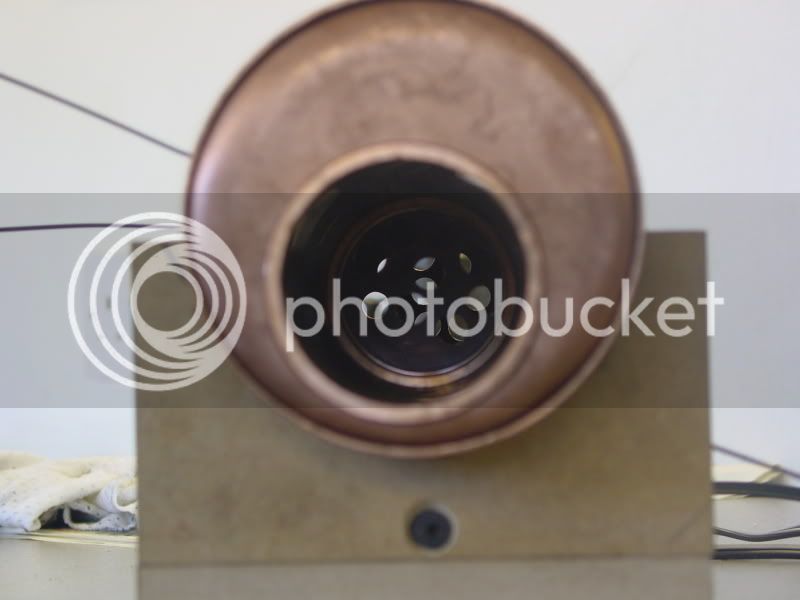
Cheers
Rich
Today I cut the hole in the boiler end plate for the firebox. After marking its position on the end plate I set it up in the 4 jaw.

Then cut out a hole close to size. The copper cuts easily with a normal turning tool.

Then bring to size with a boring tool. The last dozen or so cuts were taken a few thou at a time until the firebox would enter.


This is a view looking down the boiler barrel

The other end plate needs to be drilled for the fire tubes. I set it up in the mill using the punch to hold it.

After drilling the first 3 holes I secured it with a screw and removed the clamps so that I could turn the rotary table.

Then drilled the remaining holes.

Fitted into the boiler barrel.

A view looking down the firebox. The firetube holes are not correctly aligned yet.

Cheers
Rich
Hi Arnold
The temptation to stick it all together is very strong but I have to be patient. I have to work out where all the various bushes will go, there are 3 stays to get in plus internal pads for mounting the cylinder and axles etc so the soldering job is a good way down the road yet.
Cheers
Rich
The temptation to stick it all together is very strong but I have to be patient. I have to work out where all the various bushes will go, there are 3 stays to get in plus internal pads for mounting the cylinder and axles etc so the soldering job is a good way down the road yet.
Cheers
Rich
Hi
I need to fabricate a cylinder so thats what I have been doing today. I had some success using a brake cylinder on my beam engine (an aluminium one) so decided to use one again although cast iron this time.
The cylinder I am using has a bore of .7 inch.
First job was to remove the unwanted portion.

Then face off in the 4 jaw chuck. It machines really well
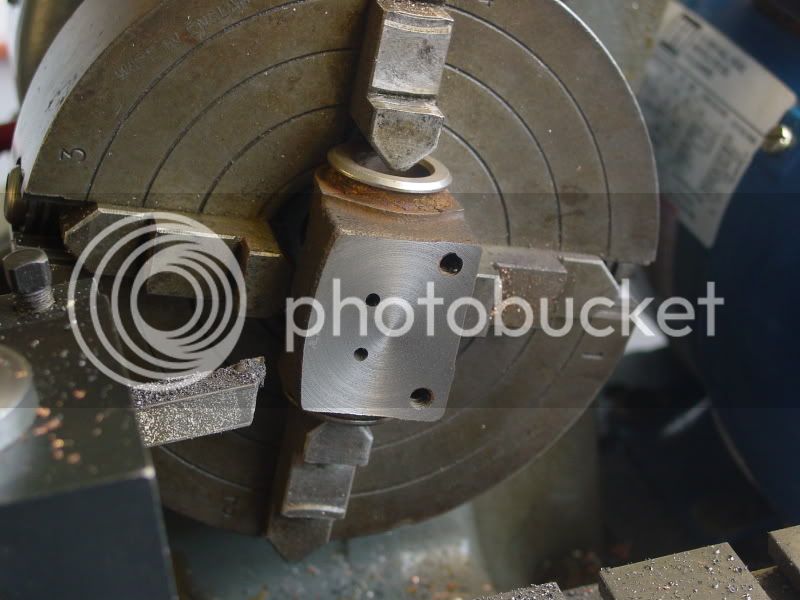
Make a mandrel to hold it. Its machined to be a nice sliding fit in the bore. Partoff a bit to make a thick washer. Machine a shoilder for a O ring to sit on. Tightening the 6mm cap head bolt expands the O ring and grips the cylinder.
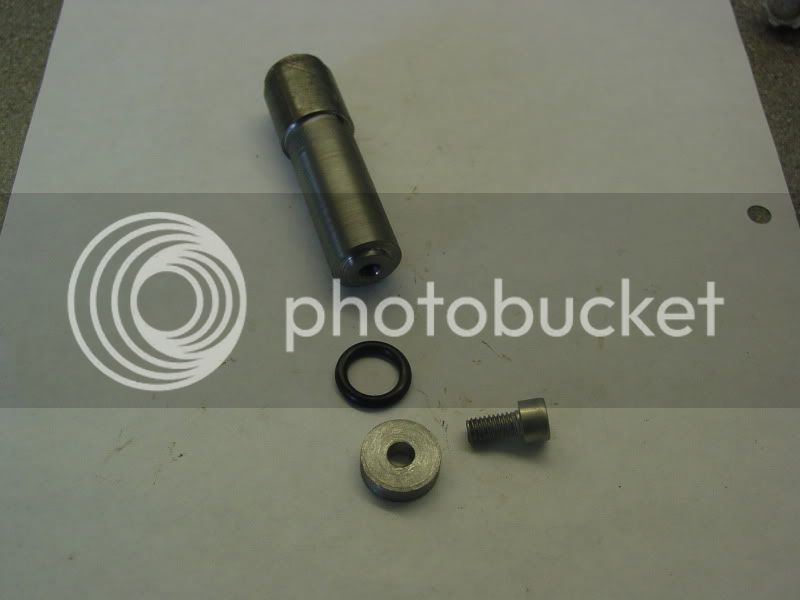
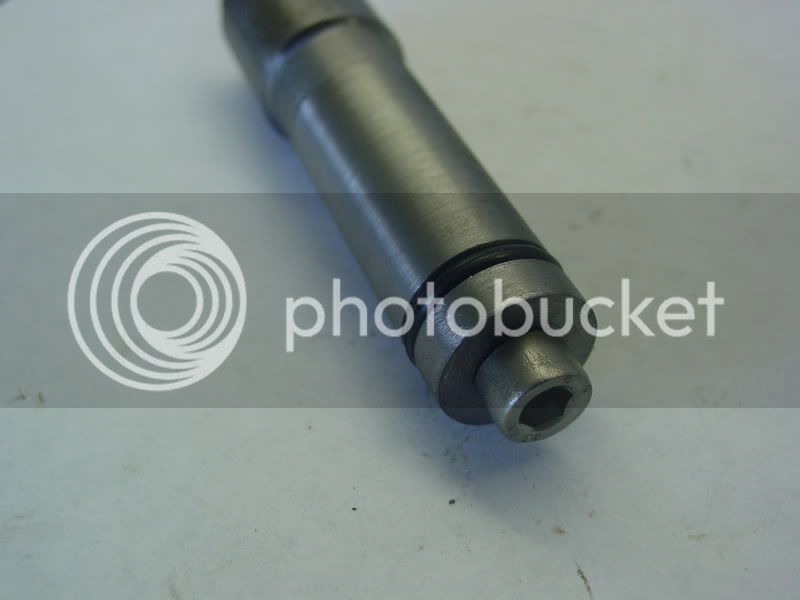
In the lathe and face off each end.

More to follow later
Cheers
Rich
I need to fabricate a cylinder so thats what I have been doing today. I had some success using a brake cylinder on my beam engine (an aluminium one) so decided to use one again although cast iron this time.
The cylinder I am using has a bore of .7 inch.
First job was to remove the unwanted portion.

Then face off in the 4 jaw chuck. It machines really well

Make a mandrel to hold it. Its machined to be a nice sliding fit in the bore. Partoff a bit to make a thick washer. Machine a shoilder for a O ring to sit on. Tightening the 6mm cap head bolt expands the O ring and grips the cylinder.


In the lathe and face off each end.

More to follow later
Cheers
Rich
Hi
Drill out the threaded holes with a 5.9mm drill.

Press in some 6mm steel and some 1/8 steel into the smaller holes.
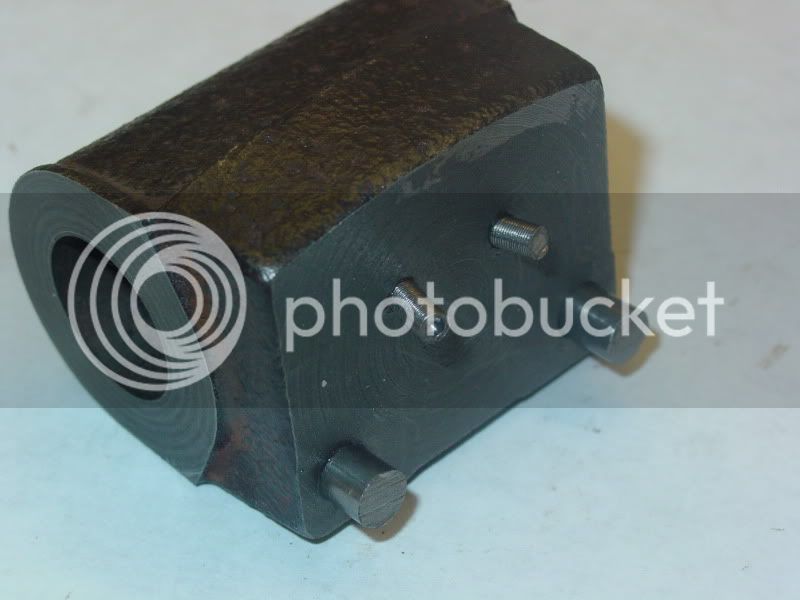
To make the saddle I chopped off a piece of steel tube in the bandsaw

In the lathe bored to size and cleaned up on the outside.

Checking the bore size with an offcut piece of the boiler barrel.

I'll cut a piece out of this now.
I need to machine the side of the cylinder now to the same radius as the saddle. Not sure how to do this so I'll post a question in the question and answers section.
Cheers
Rich
Drill out the threaded holes with a 5.9mm drill.

Press in some 6mm steel and some 1/8 steel into the smaller holes.

To make the saddle I chopped off a piece of steel tube in the bandsaw

In the lathe bored to size and cleaned up on the outside.

Checking the bore size with an offcut piece of the boiler barrel.

I'll cut a piece out of this now.
I need to machine the side of the cylinder now to the same radius as the saddle. Not sure how to do this so I'll post a question in the question and answers section.
Cheers
Rich
modelman1838
Well-Known Member
- Joined
- Oct 1, 2011
- Messages
- 51
- Reaction score
- 6
Rich
I like the idea of using an "o" ring in an expanding mandrel. I know that rubber is incompressible similar to a fluid but have never thought of using one in this sort of situation, nice one.
Hugh.
I like the idea of using an "o" ring in an expanding mandrel. I know that rubber is incompressible similar to a fluid but have never thought of using one in this sort of situation, nice one.
Hugh.
Hi
Managed a couple of hours this morning.
Cleaned up the face again to get rid of the protruding plugs.
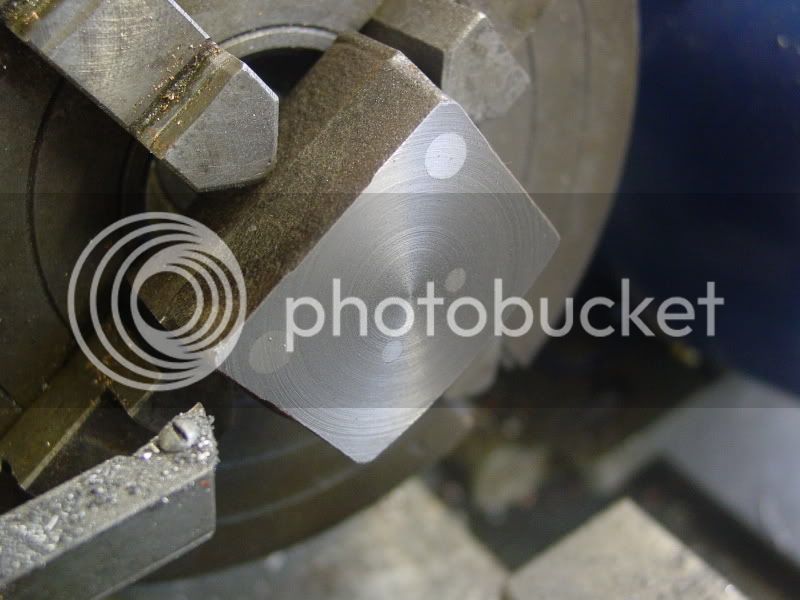
Then machined one side of the cylinder with a fly cutter
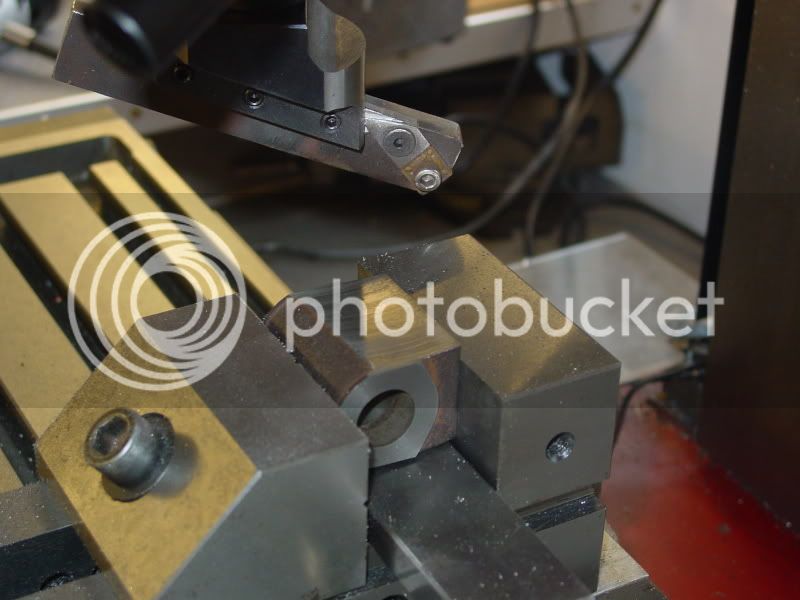
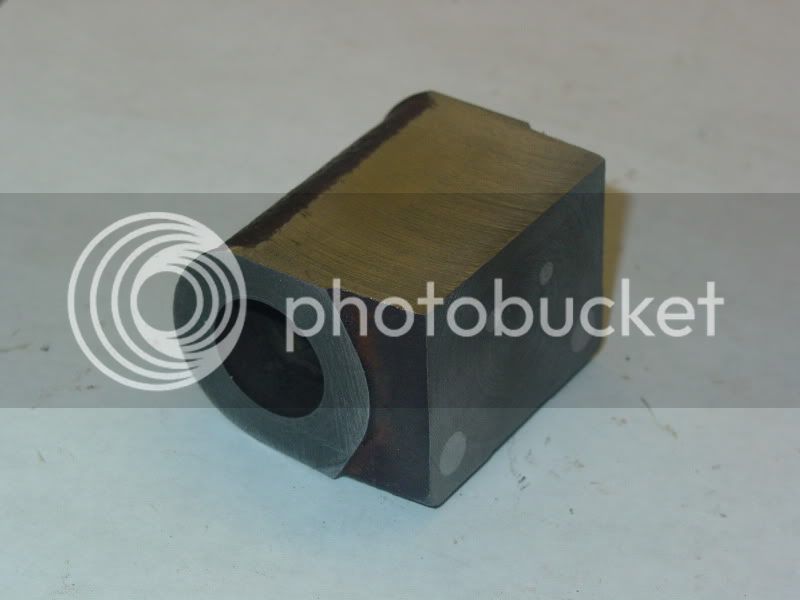
Cut a steel block to size
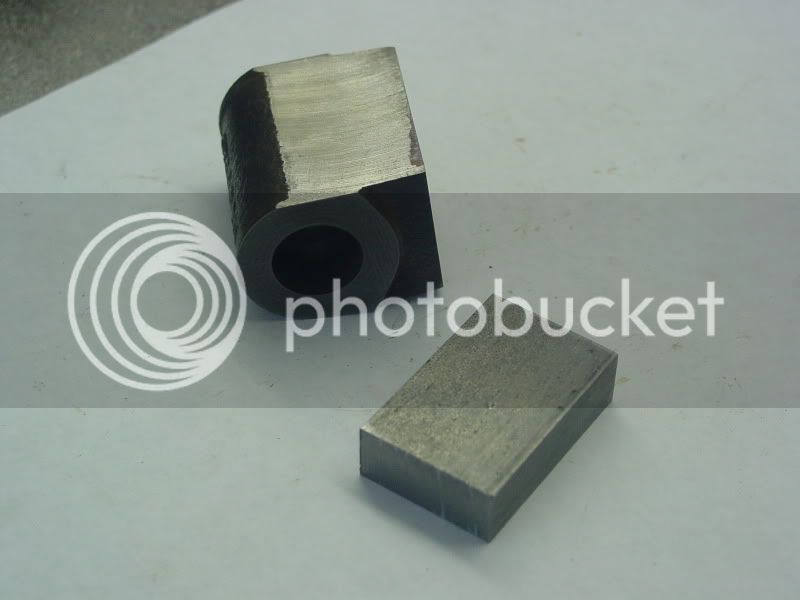

Set up in the mill and using a laser cntre finder to set the boring head.


After cutting
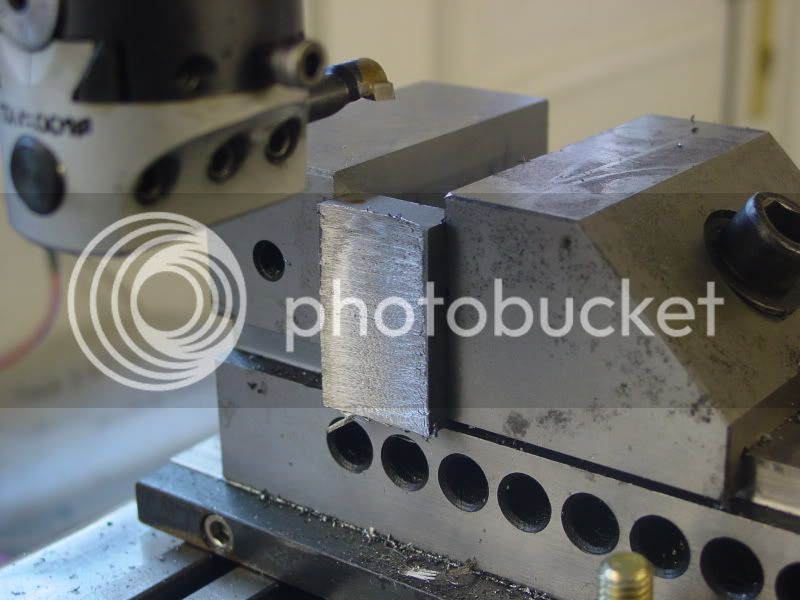


Cheers
Rich
Managed a couple of hours this morning.
Cleaned up the face again to get rid of the protruding plugs.

Then machined one side of the cylinder with a fly cutter


Cut a steel block to size


Set up in the mill and using a laser cntre finder to set the boring head.


After cutting



Cheers
Rich
That looks a better height now.
So whats it to be silversolder the lot or just silver solder the steel block to the tube and then attatch the CI cyl with Csk screws from below?
Probably best to do a test solder joint with that bit you cut off and then decide depending on the outcome.
J
So whats it to be silversolder the lot or just silver solder the steel block to the tube and then attatch the CI cyl with Csk screws from below?
Probably best to do a test solder joint with that bit you cut off and then decide depending on the outcome.
J
Similar threads
- Replies
- 25
- Views
- 4K



